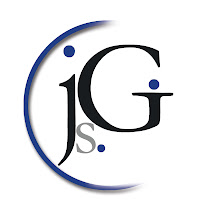I just got an email proclaiming “Registration Now Open for
XYZSuperMarketingSummit 2014!” One of many that hit my inbox on any given day.
Stepping back, my first thought was: WGAS?
I have never attended XYZSuperMarketingSummit
before, although I’m in their target audience. So an email touting that I’m now able to register for the upcoming event – without a hint as to why it might be in my best interest to do so – is
at best a dubious tactic. And as was a recipient, I have to assume this went to "everybody in the database (hopefully opt-ins!)" or at least a much wider group of people than it should have.
What this really speaks to is a lack of thought behind
segmentation strategy in event marketing. As seasoned event marketers know (and
basic marketing ABCs dictate), past attendees are an event's core audience. If an event has traditionally produced good content and networking – core reasons people attend events –
they will return, if not with every iteration of the show, at last with every
other. To that end, informing this core of people know reg is open (and of course
offering up an incentive as a way of showing appreciation for past
participation) is a good, acceptable tactic.
Getting segmentation right has always been key to event
marketing – and today, as technologies and audiences have advanced and matured it right is
even more of an imperative. There is, of course, no one answer to how to
segment – your database is structured differently from anybody else’s.
However, some of the key segments you need to be thinking about deriving
specific messages to include:
- Past attendees: again, the easy segment. If you’ve delivered good product in the past, and done your legwork on maintaining engagement between events, getting these customers to re-purchase (both early and in large numbers) should be a key driver to continued success. If possible, consider sub-segmenting this out by individuals who completed event surveys (especially those who gave the event glowing reviews!)
- Cancels and no-shows: first, ensure these are filtered out of the above group (sending a “attend again this year!” to somebody who cancelled last year makes you look a bit silly). And you may want to split this between cancels and no-shows depending on the type of show and how granular you’d want to get. But a "sorry you missed last year, don't miss it again" message is worth exploring.
- Event-specific prospects: if you’ve delivered content around past events and captured leads, a strong subset of prospects – maybe not effective with a “registration is open!” email, but people who have expressed interested in content around the event should be high on your segmentation strategy, even if you didn’t convert them after they attended a webinar you did for last year’s event.
- Demographics: this depends on the type of event – if it has tracks or sessions that speak to a certain vertical, job roll or level, plan on segmenting and communicating to these individuals about how the event fills their specific needs. Think through this before implementing – it needs to come across as natural and intuitive to the recipient (don’t segment out widget manufacturers and talk to them if your event has one 50 minute session on widget manufacturing over the course of two days)
Good luck!
PS Please do share any general segments you feel have been helpful - always great to hear back!




No comments:
Post a Comment